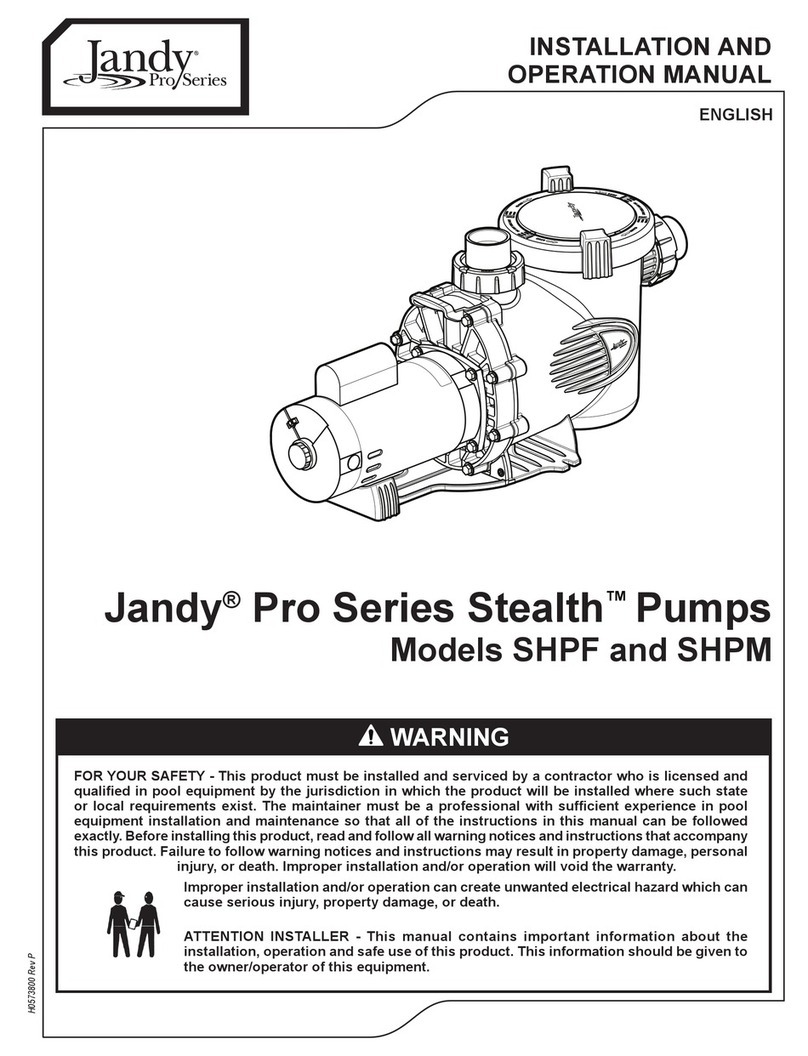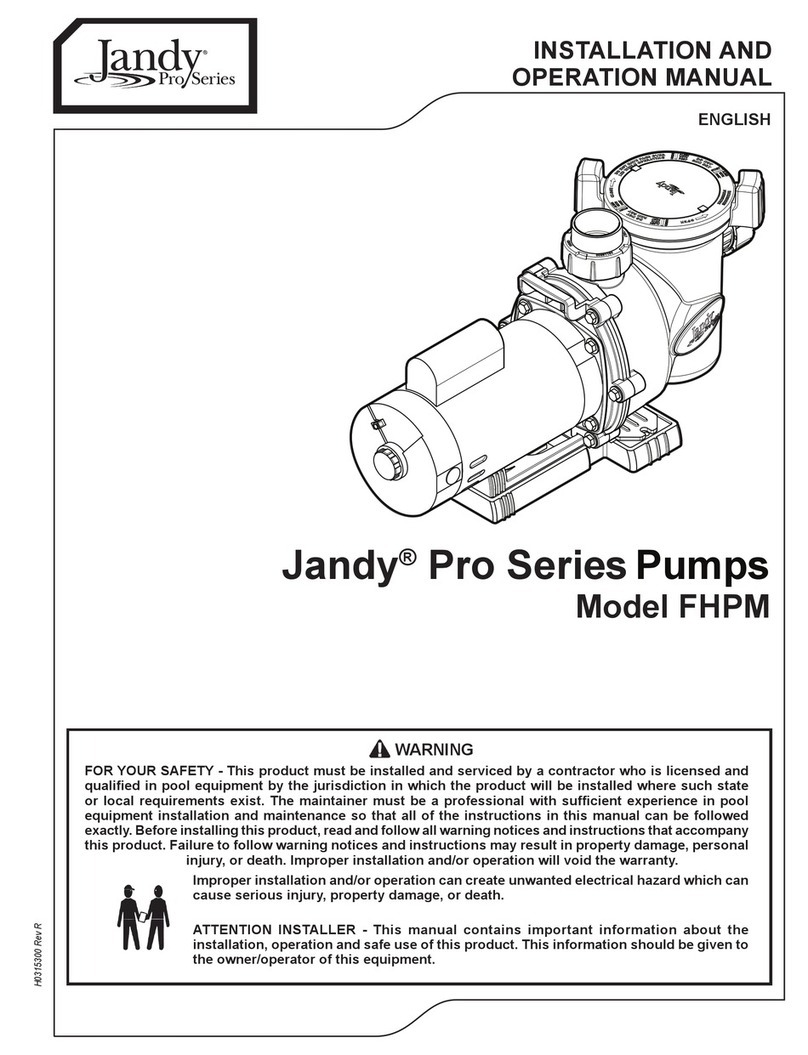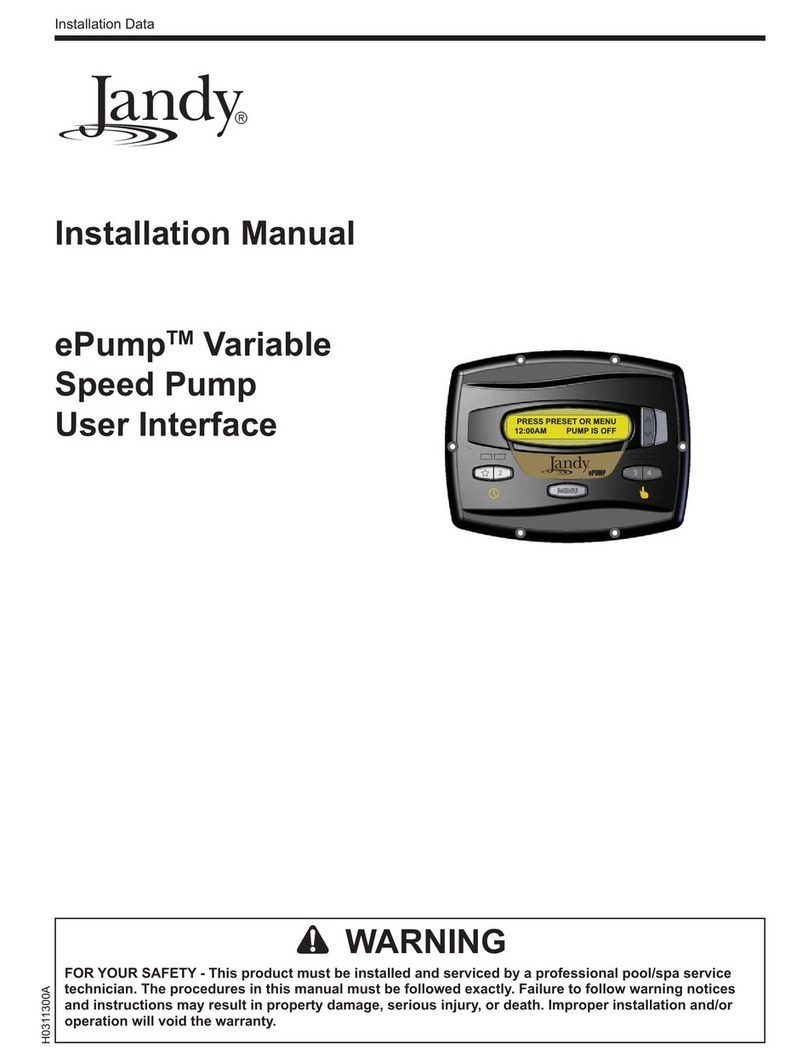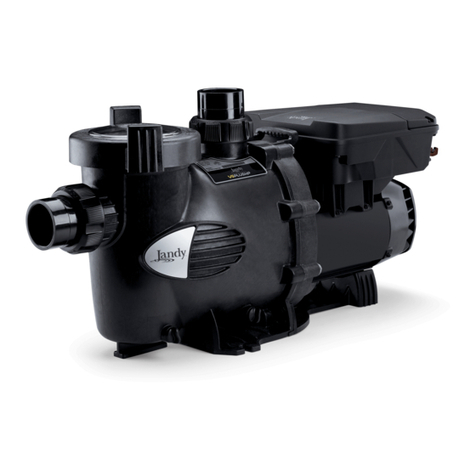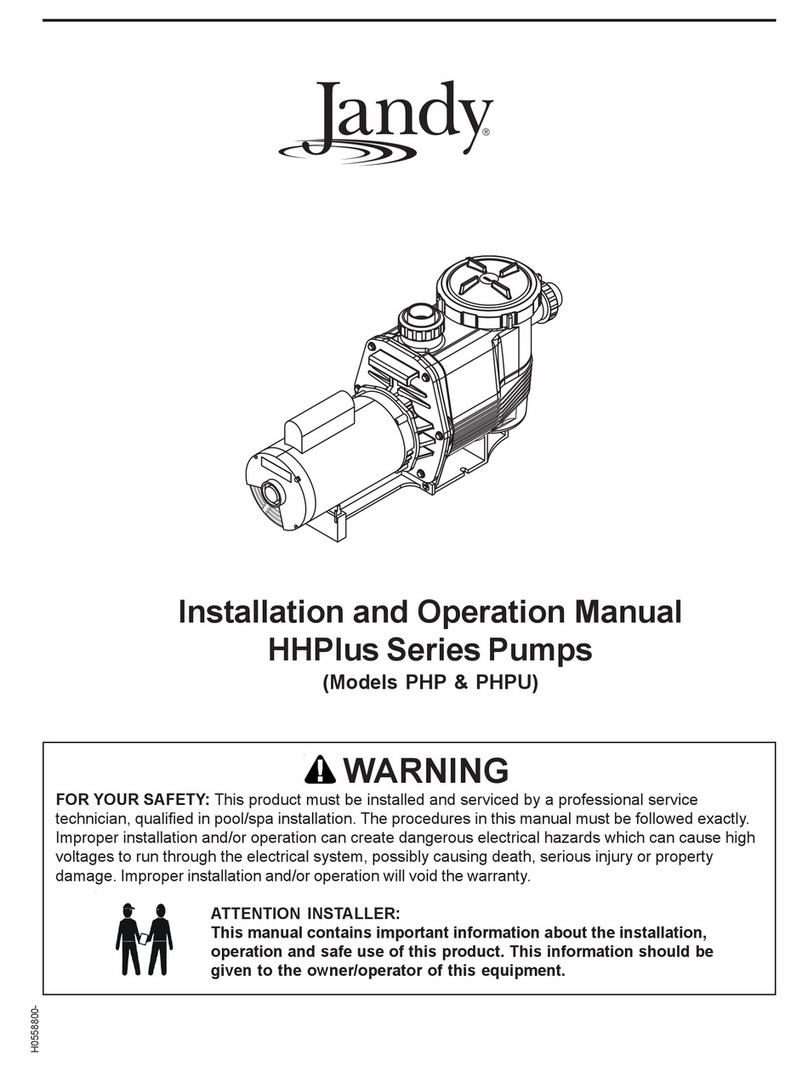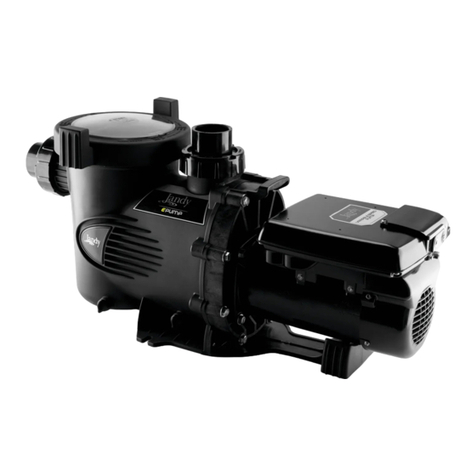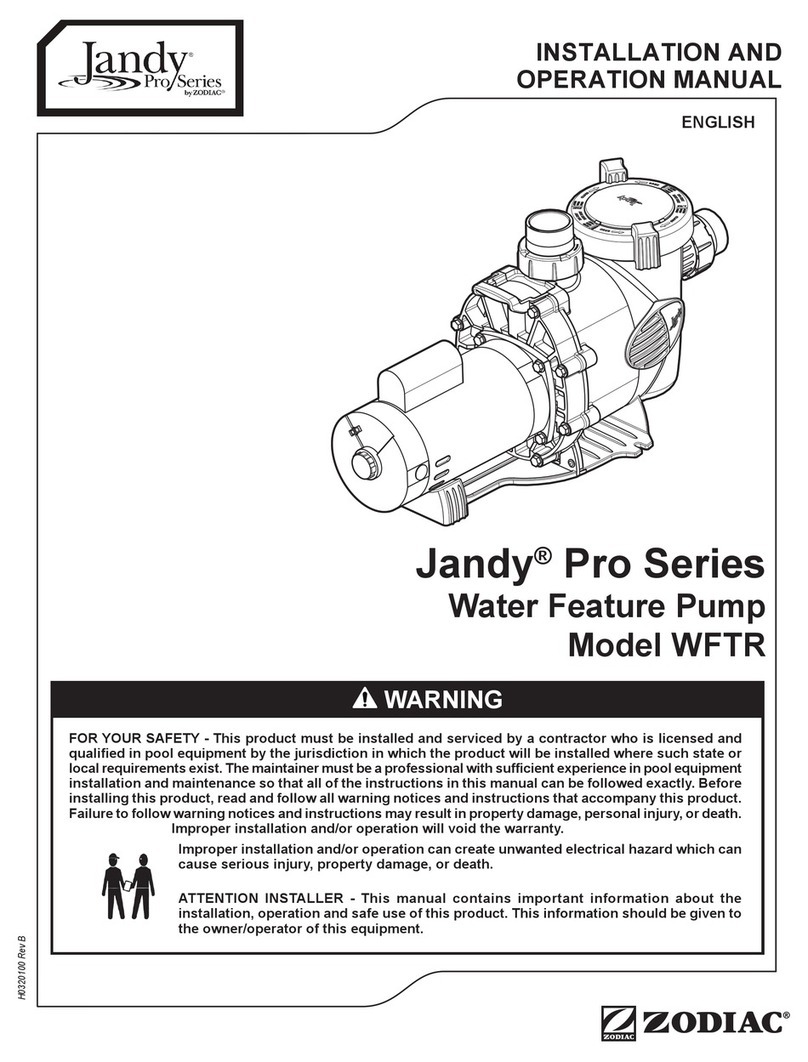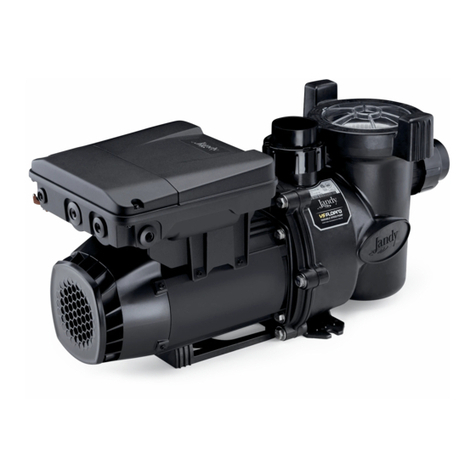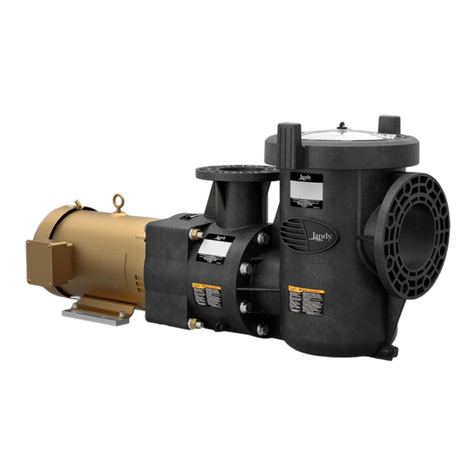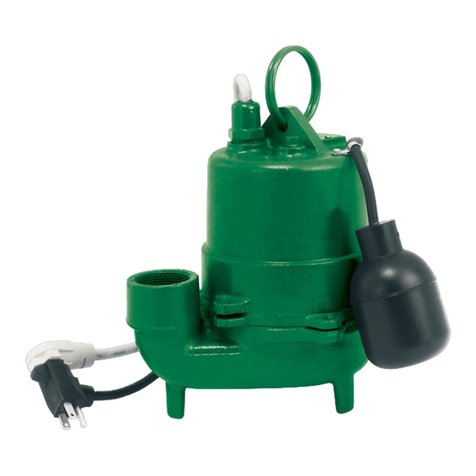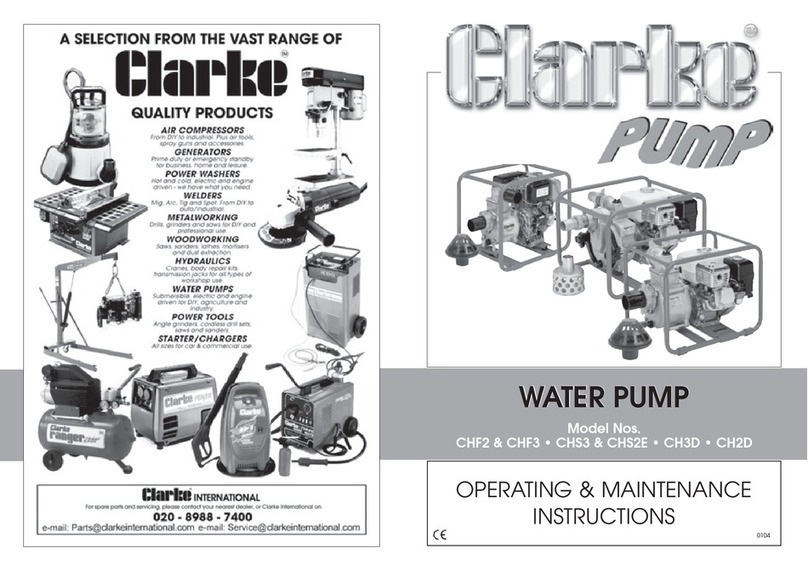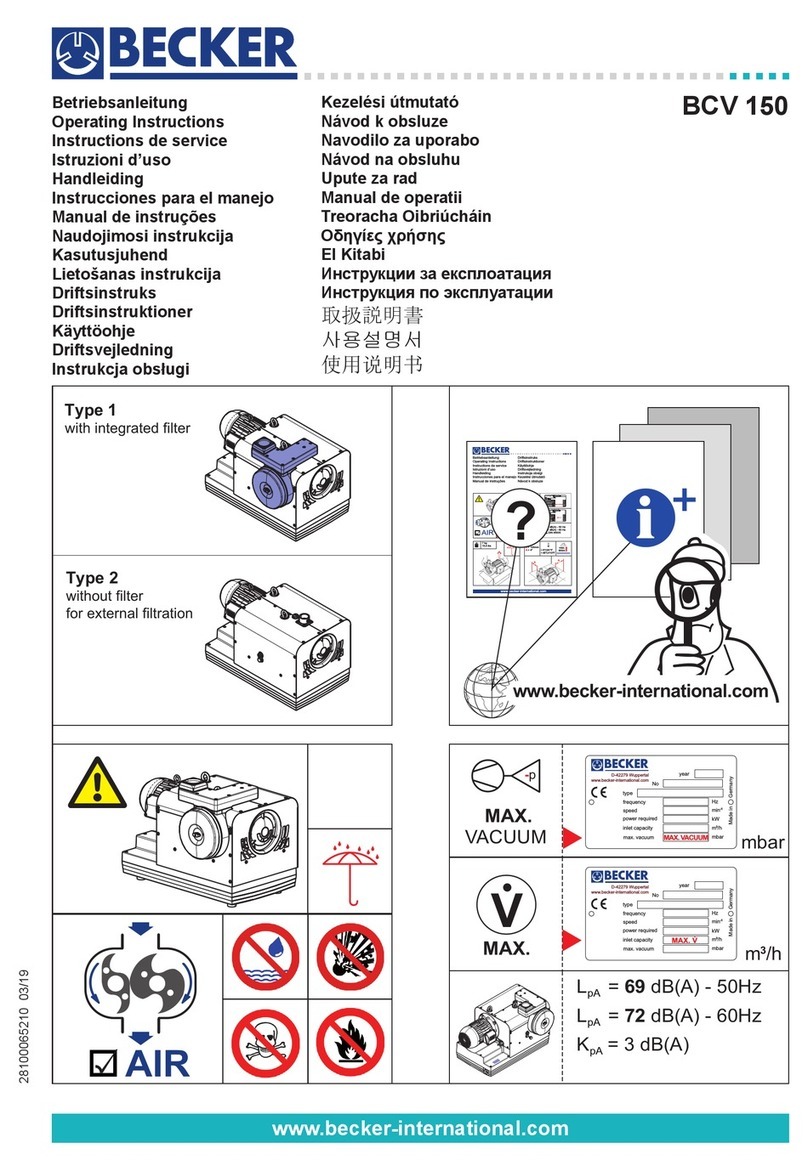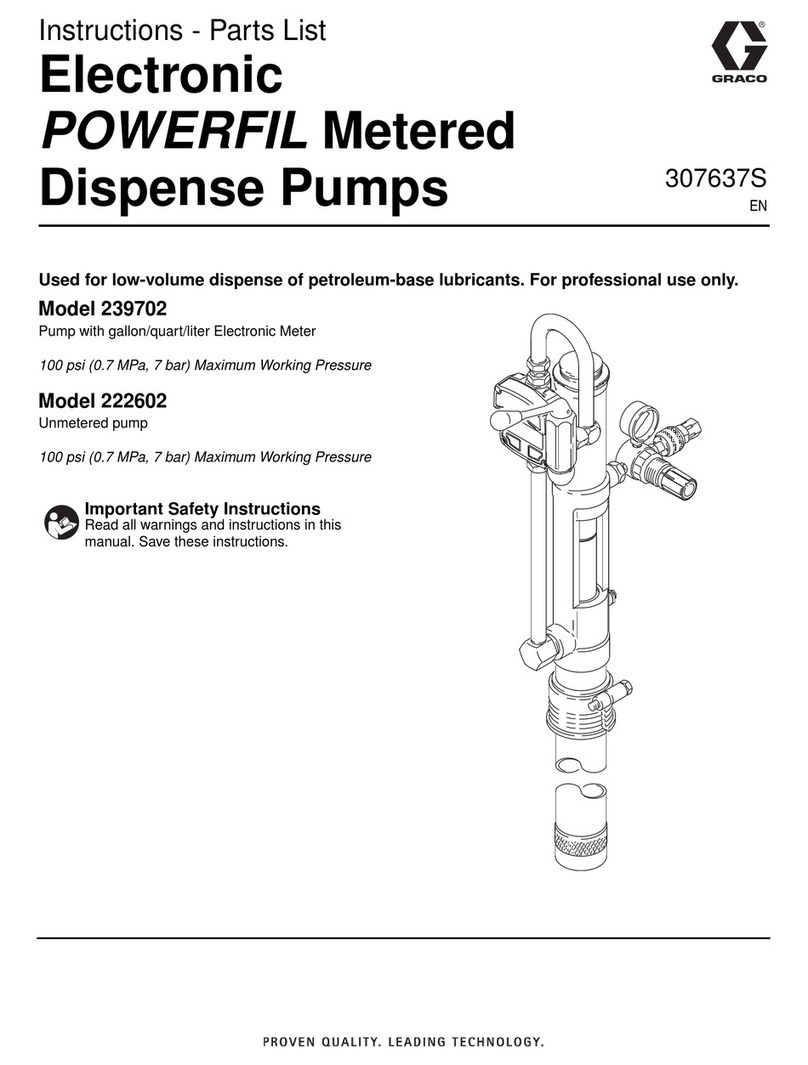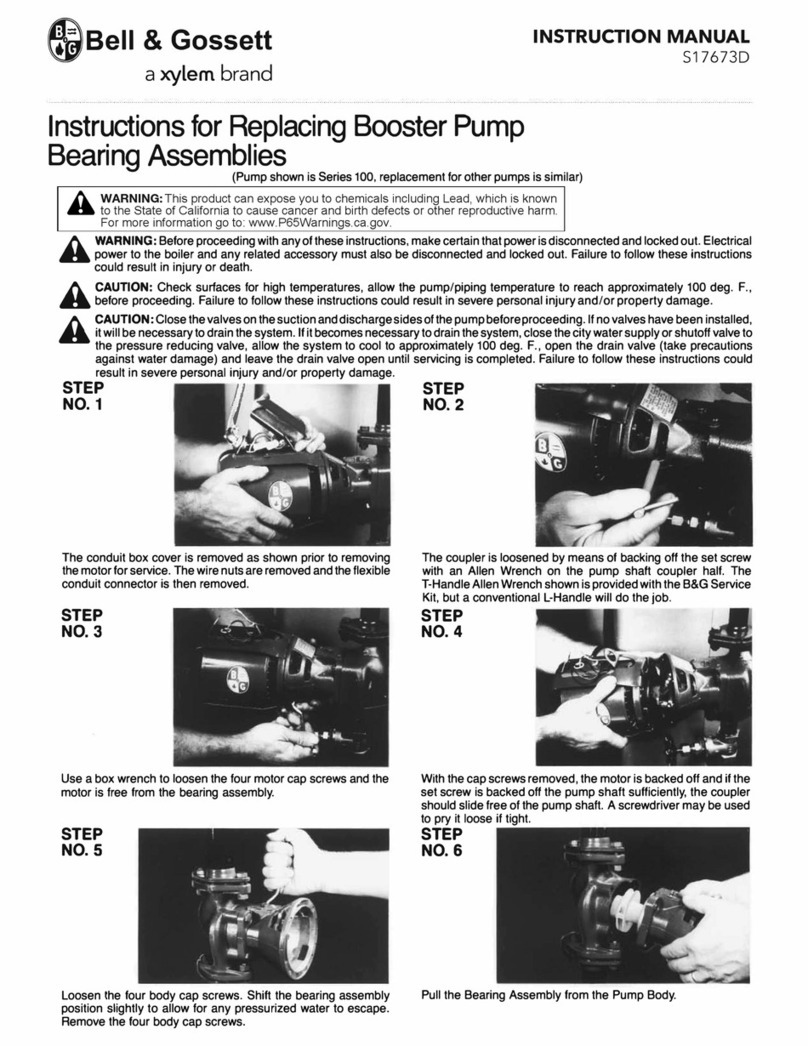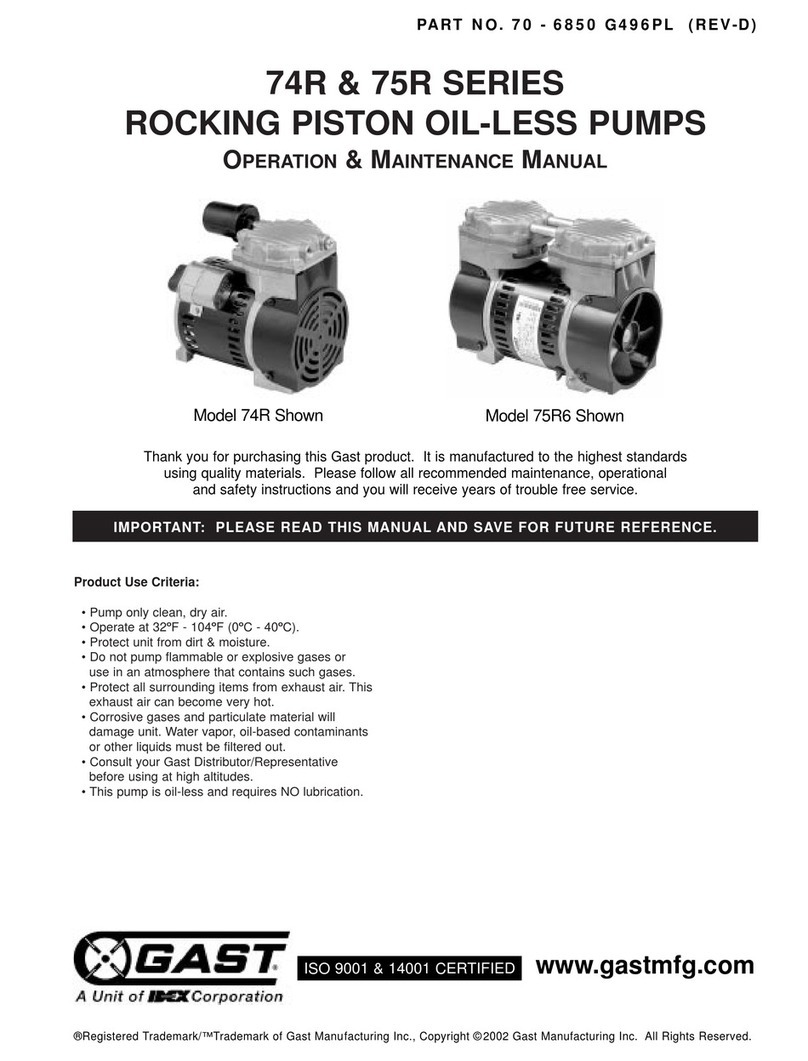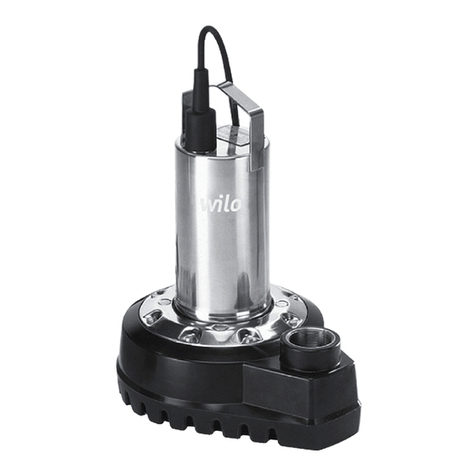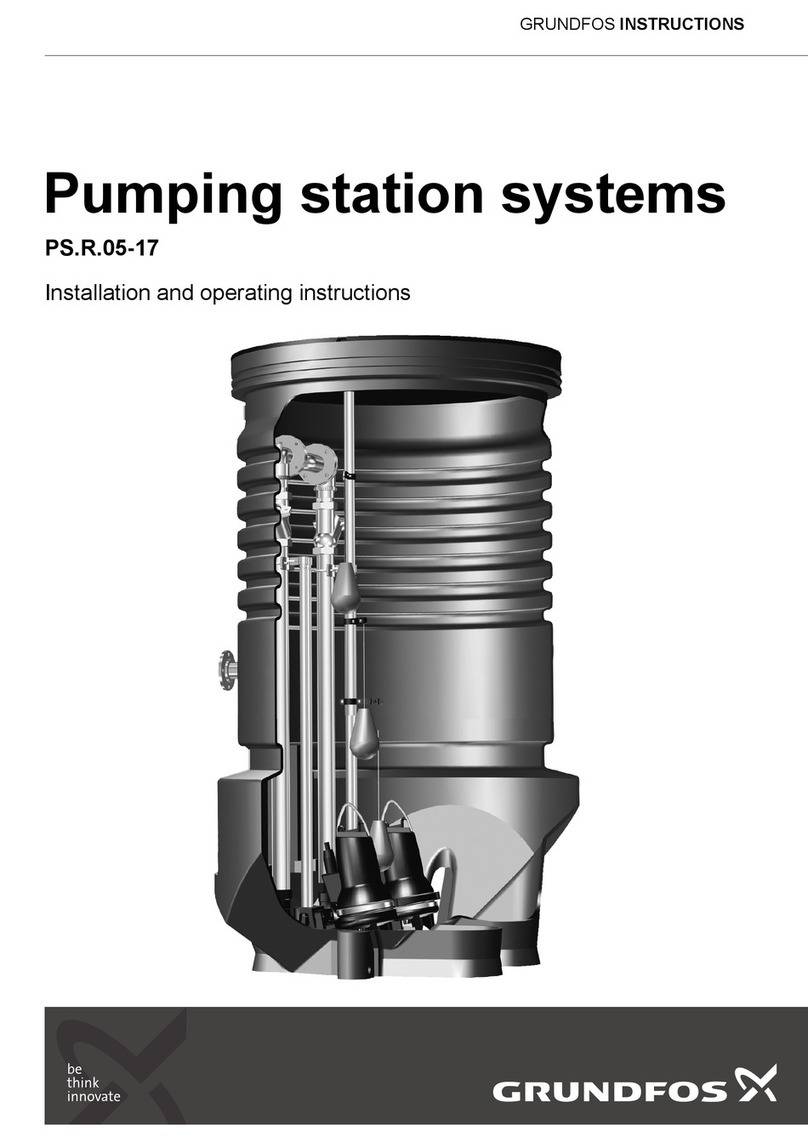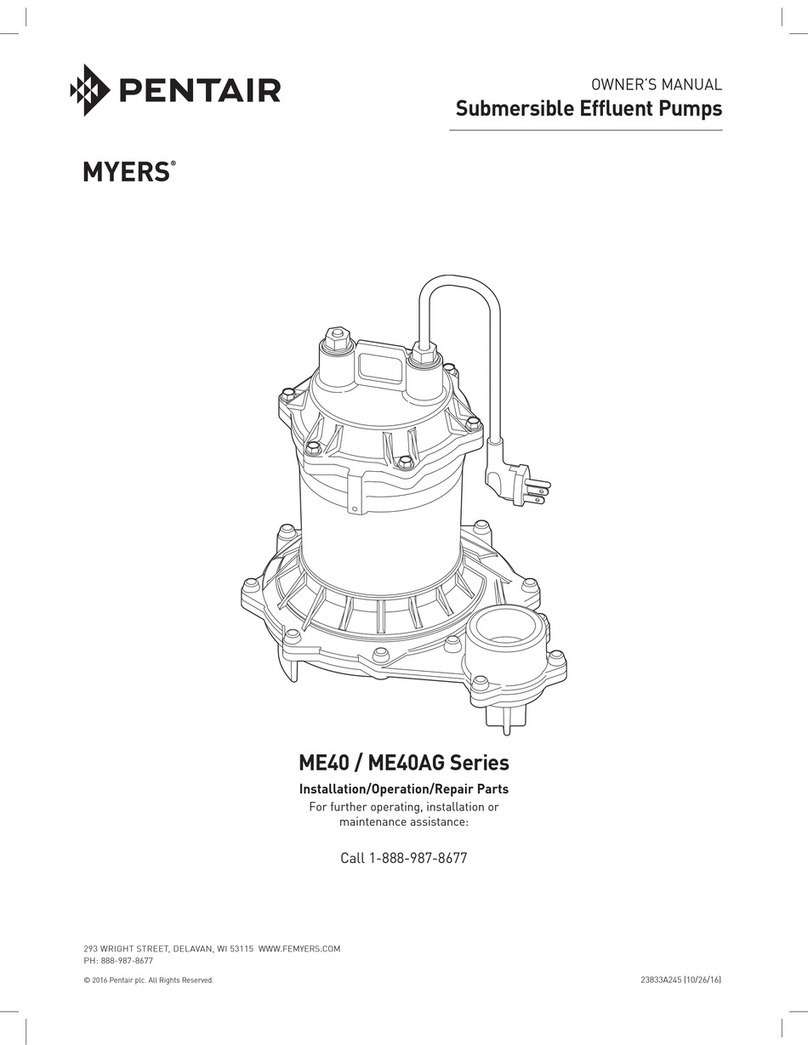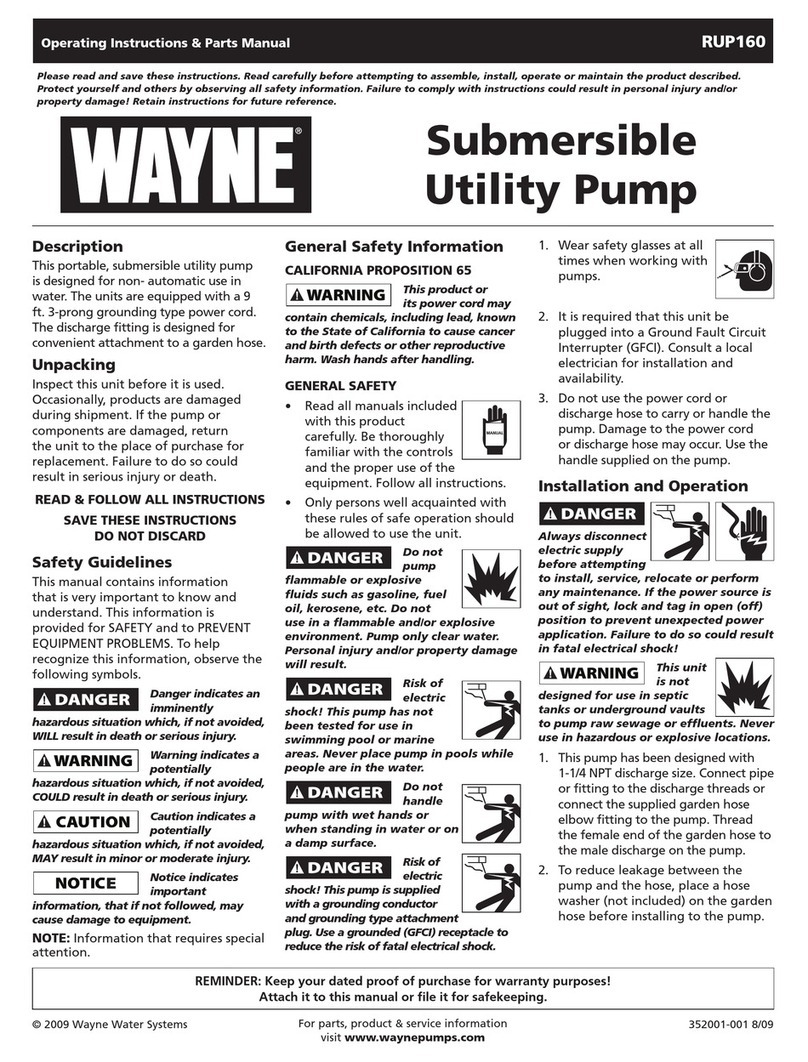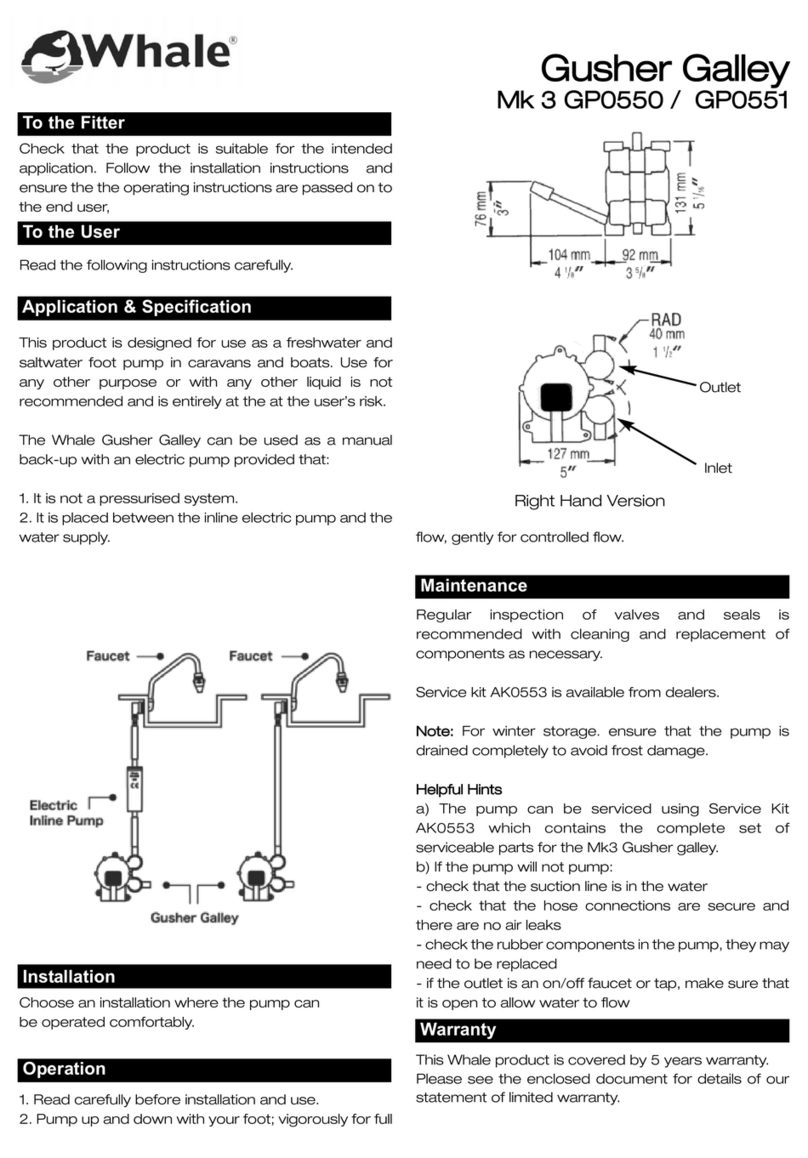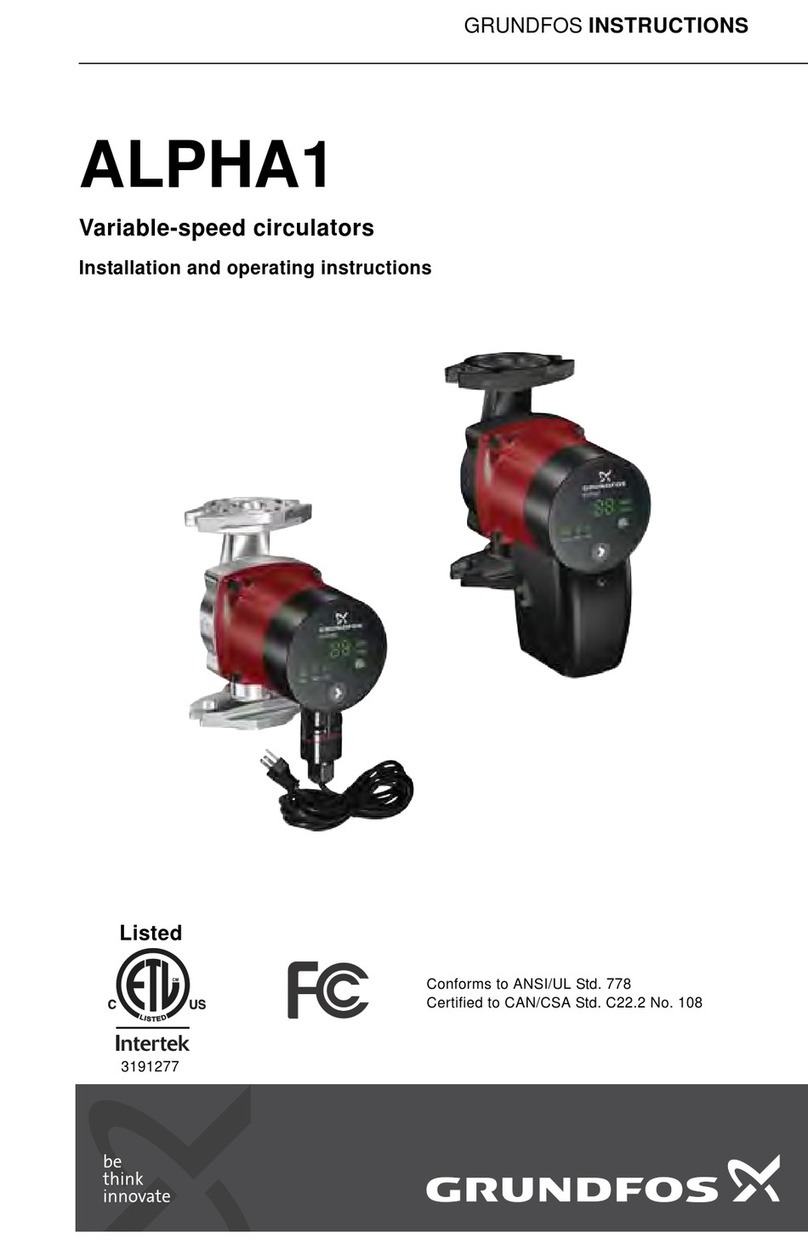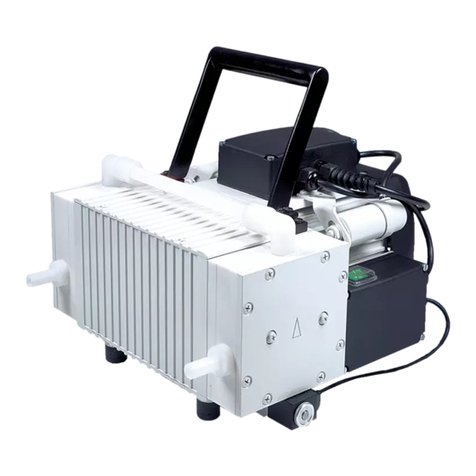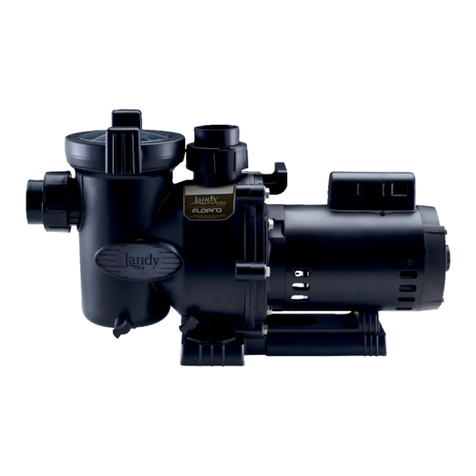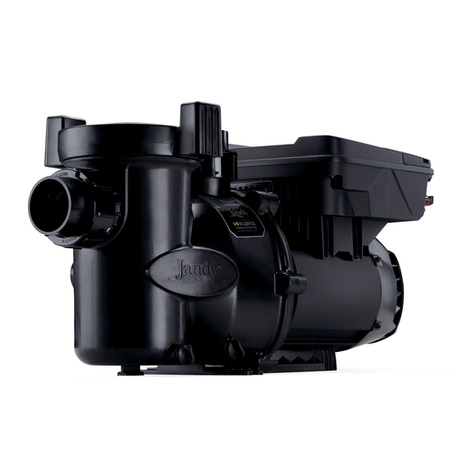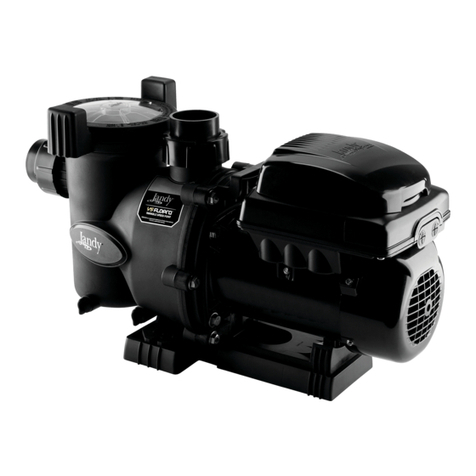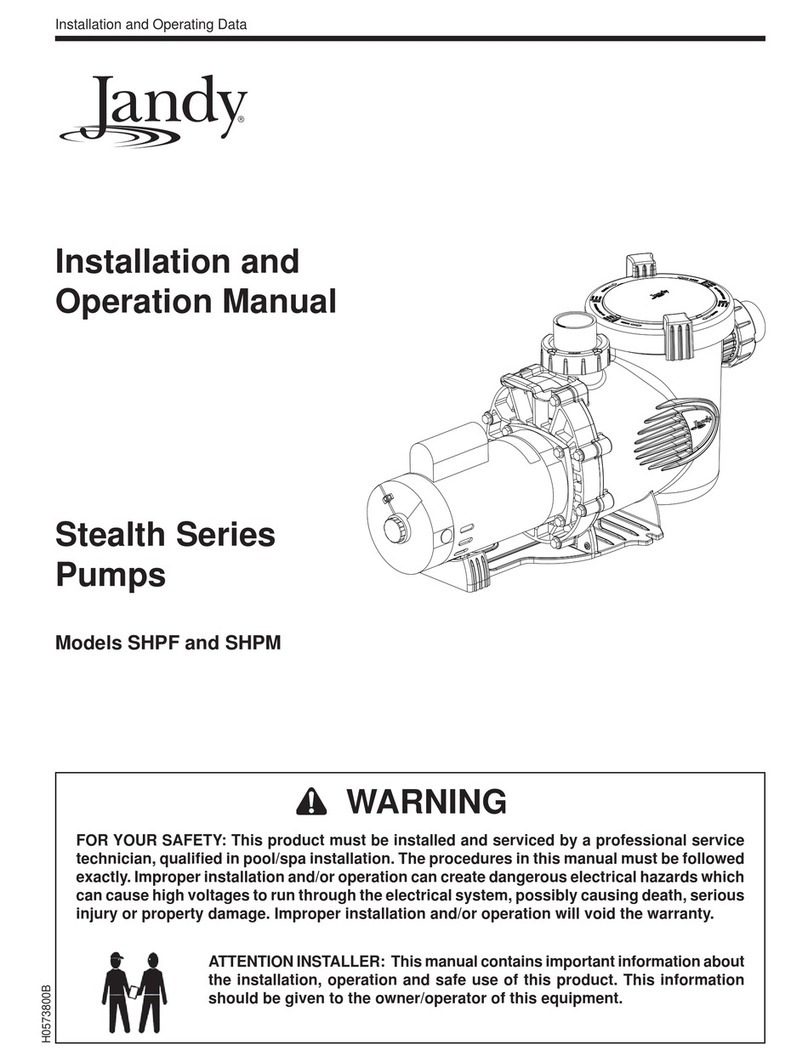
Page 9
ENGLISH
Jandy®FHP Pumps |Installation & Operation Manual
3.1.4 Pipe Sizing
3.1.4.1 Suction Pipe
When the pump is located up to 50 feet from the pool,
the recommended Schedule 40 minimum pipe size
for the suction side of the pump is 1 1/2" (FHPM.75),
2" (FHPM1.0/FHPM1.5/FHPM2.0), 2 1/2" (FHPM2.5).
3.1.4.2 Discharge Pipe
When the pump is located up to 50 feet from the pool,
the recommended Schedule 40 minimum pipe size for
the discharge side of the pump is 1 1/2" (FHPM.75),
2" (FHPM1.0/FHPM1.5/FHPM2.0), 2 1/2" (FHPM2.5).
NOTE: All pipe sizes (Schedule 40) are able to withstand the
pressures the pump will deliver, but not necessarily
theow.Ifthepipeistoosmallforthepump,orif
the pump is elevated above water, the maximum
gallons per minute (GPM) may not be delivered. If
this happens, the pump will develop an air pocket
(cavitation) that will make noise, and the life of the
pump may be shortened.
3.1.4.3 Installation Recommendations
1. If the pump is located below water level,
isolation valves must be installed on both sides
of the pump to prevent the back ow of pool
water during any routine or required servicing.
2. To help prevent diculty in priming, install
the suction pipe without high points, which
can trap air. (High points are inverted ‘U’s
above the inlet of a pump. In plumbing, they
are commonly referred to as airlocks.) For
installations of equipment up to 100 feet from
the water, refer to the pipe sizing chart in the
table. For installations of equipment more than
100 feet from the water, the recommended pipe
size must be increased to the next size.
Table 2. Pipe Sizing Chart for Schedule 40 PVC
Pipe
Size
Maximum Flow
Suction
(6 feet per second)
Maximum Flow
Discharge
(8 feet per second)
1½" 37 GPM (140 LPM) 50 GPM (189 LPM)
2" 62 GPM (235 LPM) 85 GPM (322 LPM)
2½" 88 GPM (333 LPM) 120 GPM (454 LPM)
3. FHP Pumps come equipped with unions on
both the suction and discharge ports. This
feature simplies installation and service, and
it eliminates the possibility of leaks at threaded
adapters.
4. The FHP Pump must be connected to at least
two (2) main drains (suction outlets) for each
pool pump suction line. Each drain (suction
outlet) assembly must be provided with covers
and must be listed or certied to the latest
published version of ANSI
®
/ASME®A112.19.8,
or its successor standard, ANSI/APSP-16. The
suction outlets of the main drains must be at least
3 feet apart or at dierent planes. The suction
outlets can be a drain and skimmer, two (2)
drains, two (2) skimmers, or a skimmer with an
equalizer line installed. For additional details and
guidelines, refer to ANSI/APSP 7, the standard
for Suction Entrapment Avoidance in Swimming
Pools, Wading Pools, Spas, Hot Tubs, and
Catch Basins. Check the local codes for proper
installation requirements. Applicable local codes
will take precedence over other codes.
NOTE: To prevent entrapment, the system must be built so
that it cannot operate with the pump drawing water
from only one (1) main drain. At least two (2) main
drains must be connected to the pump when it is in
operation. However, if two (2) main drains run into
a single suction line, the single suction line may be
equippedwithavalvethatwillshutobothmain
drains from the pump.
5. The piping must be well supported and not
forced together in places where constant stress
will be experienced.
6. Always use properly sized valves. Jandy
Diverter Valves and Ball Valves typically have
the best ow capabilities.
7. Use the fewest ttings possible. Every
additional tting has the eect of moving the
equipment farther away from the water.
NOTE: Ifmorethan10suctionttingsareneeded,thepipe
size must be increased.
8. Every new installation must be pressure tested
according to local codes. See Pressure Testing
section.
3.2 Electrical Installation
3.2.1 Voltage Checks
The correct voltage, as specied on the pump data plate,
is necessary for proper performance and long motor life.
The incorrect voltage will decrease the pump’s ability
to perform and can cause overheating, reduce the motor
life, and result in higher electric bills.
It is the responsibility of the electrical installer to
provide data plate operating voltage to the pump by
ensuring proper circuit sizes and wire sizes for the
specic application.
The National Electrical Code®(NEC®, NFPA-70®)
requires all pool pump circuits be protected with a
Ground Fault Interrupter (GFCI). Therefore, it is also
the responsibility of the electrical installer to ensure that
the pump circuit is in compliance with this and all other
applicable requirements of the National Electrical Code
(NEC) and any other applicable installation codes.




















